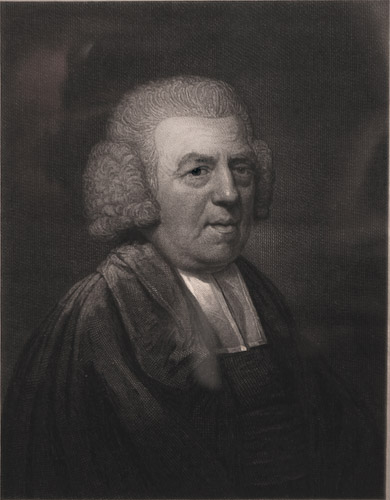|
How Sweet The Name Of Jesus Sounds!
How sweet the name of Jesus sounds is a hymn by the evangelical Anglican cleric John Newton. It was published in ''Olney Hymns'' in 1779. Of a metaphorical nature, it focuses on the power of the name of Jesus Two names and a variety of titles are used to refer to Jesus in the New Testament. In Christianity, the two names Jesus and Emmanuel that refer to Jesus in the New Testament have salvific attributes.''Bible explorer's guide'' by John Phillips 20 .... It is often sung to the tune of ''Saint Peter'' by Alexander Reinagle and less frequently to ''Ortonville'' by Thomas Hastings. A modern alternative tune is ''Rachel'' by Chris Bowater. Text 1 How sweet the name of Jesus sounds in a believer's ear! It soothes his sorrow, heals his wounds, and drives away his fear. 2 It makes the wounded spirit whole and calms the troubled breast; 'tis manna to the hungry soul, and to the weary, rest. 3 Dear Name! the Rock on which I build; my shield and hiding-place; My never-failing trea ... [...More Info...] [...Related Items...] OR: [Wikipedia] [Google] [Baidu] |
John Newton
John Newton (; – 21 December 1807) was an English evangelical Anglican cleric and slavery abolitionist. He had previously been a captain of slave ships and an investor in the slave trade. He served as a sailor in the Royal Navy (after forced recruitment) and was himself enslaved for a time in West Africa. He is noted for being author of the hymns '' Amazing Grace'' and '' Glorious Things of Thee Are Spoken''. Newton went to sea at a young age and worked on slave ships in the slave trade for several years. In 1745, he himself became a slave of Princess Peye, a woman of the Sherbro people in what is now Sierra Leone. He was rescued, returned to sea and the trade, becoming Captain of several slave ships. After retiring from active sea-faring, he continued to invest in the slave trade. Some years after experiencing a conversion to Christianity, Newton later renounced his trade and became a prominent supporter of abolitionism. Now an evangelical, he was ordained as a Church of ... [...More Info...] [...Related Items...] OR: [Wikipedia] [Google] [Baidu] |
Olney Hymns
The ''Olney Hymns'' were first published in February 1779 and are the combined work of curate John Newton (1725–1807) and his poet friend William Cowper (1731–1800). The hymns were written for use in Newton's rural parish, which was made up of relatively poor and uneducated followers. The ''Olney Hymns'' are an illustration of the potent ideologies of the Evangelical movement, to which both men belonged, present in many communities in England at the time. The ''Olney Hymns'' were very popular; by 1836 there had been 37 recorded editions, and it is likely that many other editions were printed in both Britain and America. As hymn-singing gained popularity in the nineteenth century, many (around 25) of the hymns were reproduced in other hymn-books and pamphlets. Today around six of the original 348 ''Olney Hymns'' regularly feature in modern church worship, the most famous of which is "Amazing Grace". Other well-known hymns include ''Glorious Things of Thee Are Spoken'' and ''Ho ... [...More Info...] [...Related Items...] OR: [Wikipedia] [Google] [Baidu] |
Name Of Jesus
Two names and a variety of titles are used to refer to Jesus in the New Testament. In Christianity, the two names Jesus and Emmanuel that refer to Jesus in the New Testament have salvific attributes.''Bible explorer's guide'' by John Phillips 2002 page 147''All the Doctrines of the Bible'' by Herbert Lockyer 1988 page 159 After the crucifixion of Jesus the early Church did not simply repeat his messages, but focused on him, proclaimed him, and tried to understand and explain his message. One element of the process of understanding and proclaiming Jesus was the attribution of titles to him.''Jesus: a Gospel portrait'' by Donald Senior 1992 pages 145-147 Some of the titles that were gradually used in the early Church and then appeared in the New Testament were adopted from the Jewish context of the age, while others were selected to refer to, and underscore the message, mission and teachings of Jesus. In time, some of these titles gathered significant Christological significance ... [...More Info...] [...Related Items...] OR: [Wikipedia] [Google] [Baidu] |
Hymns By John Newton
A hymn is a type of song, and partially synonymous with devotional song, specifically written for the purpose of adoration or prayer, and typically addressed to a deity or deities, or to a prominent figure or personification. The word ''hymn'' derives from Greek (''hymnos''), which means "a song of praise". A writer of hymns is known as a hymnist. The singing or composition of hymns is called hymnody. Collections of hymns are known as hymnals or hymn books. Hymns may or may not include instrumental accompaniment. Although most familiar to speakers of English in the context of Christianity, hymns are also a fixture of other world religions, especially on the Indian subcontinent (''stotras''). Hymns also survive from antiquity, especially from Egyptian and Greek cultures. Some of the oldest surviving examples of notated music are hymns with Greek texts. Origins Ancient Eastern hymns include the Egyptian ''Great Hymn to the Aten'', composed by Pharaoh Akhenaten; the Hurrian ''H ... [...More Info...] [...Related Items...] OR: [Wikipedia] [Google] [Baidu] |


